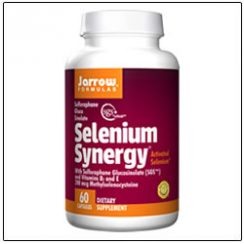Description
VITAMIN C (Ascorbic Acid): This test is based on a complex chelating agent with a poly-valent metal ion in its higher state and an indicator dye that reacts with the metal ion in its lower state. The presence of vitamin C (ascorbic acid) in urine causes the color of the test area to change from green to light yellow.
5.8% w/w ferric chloride
4.9% w/w DTPA
1.2% dipyridyl
89.1% w/w buffer and non reactive ingredients
WARNING AND PRECAUTIONS:
VITACHECK-C® strips are for in vitro use only. Do not touch test reagent area of the strip.
STORAGE
Store at room temperature between 15°C – 30°C (59°F – 86°F) and out of direct sunlight. Do not use after expiration date listed on the bottle or box.
RECOMMENDED HANDLING PROCEDURES
All unused strips must remain in the original bottle. Transfer to any container may cause reagent strips to deteriorate and become nonreactive. Do not remove desiccant from bottle. Do not open container until ready to use. Opened bottles should be used within 3 months after first opening.
TEST PROCEDURE
1. Remove from the bottle only enough strips for immediate use and replace cap tightly.
2. Collect specimen in a clean container. Dip the reagent pad of the strip in a fresh, well mixed urine specimen. Remove the strip immediately.
3. While removing, drag the edge of the strip against the top rim of the urine container to remove excess urine. Blot the lengthwise edge of the strip (NOT the reagent pad) on an absorbent paper towel, napkin, etc.
4. After 30 seconds, compare the reagent pad to the color blocks on the chart on the bottle. Proper read time and good light are critical for optimal results. Hold the strip and the bottle horizontal with the pad close to the color chart.
RESULTS
Results are determined visually by direct comparison of the reacted pad area with the color blocks printed on the bottle label. The color blocks represent the approximate amount of vitamin C (ascorbic acid) in the urine.
LIMITATIONS OF THE PROCEDURE
Comparison to the color chart for these vitamin C test strips is dependent on the interpretation of the individual. The person reading the results must have normal color vision.
EXPECTED VALUES
The daily average urinary output of vitamin C (ascorbic acid) is 20-30 mg/day but varies with intake and the physiological and psychological stress of the individual.
SPECIFIC PERFORMANCE CHARACTERISTICS VITACHECK-C® has been developed to be specific for the measurement of vitamin C (ascorbic acid) in the urine. The performance has been checked in the laboratory and in clinical studies. This test can detect vitamin C (ascorbic acid) as low as 10 mg./d1.
BIBLIOGRAPHY
1. Free, A.H. and Free H.M.: Urinalysis Critical Discipline of Clinical Science. CRC Crit. Rev. Lab. Sci. 3(4):481-531; 1972.
2. Henry, J.B. et al.: Clinical Diagnosis and Management by Laboratory Methods, 16th Ed. Philadelphia: Saunders; (1979).
3. Jackson, J.A., Conrad, M.E.: Technical Aspects of Urine Dipstick Reagent Areas. Amer. Clin. Prod. Rev.12:10-19; 1985.
4. Padayatty, S.J., He Sun, Wang, Y. et. al: Vitamin C Pharmacokinetics: Implication for Oral and Intravenous Use. Annals of Int. Med. 140(7), 553-537; 2004.
5. BraIley, J.A., Lord, R.S: Laboratory Evaluations in Molecular Medicine. The Institute for Advances in Molecular Medicine, Norcross, Ga. 26-27, 2001.







Reviews
There are no reviews yet.